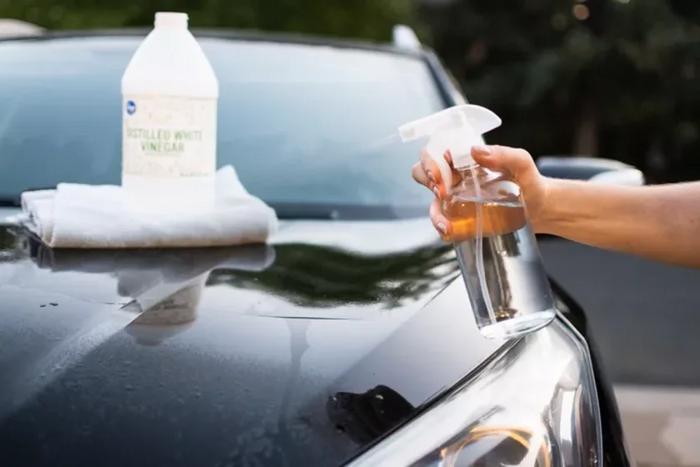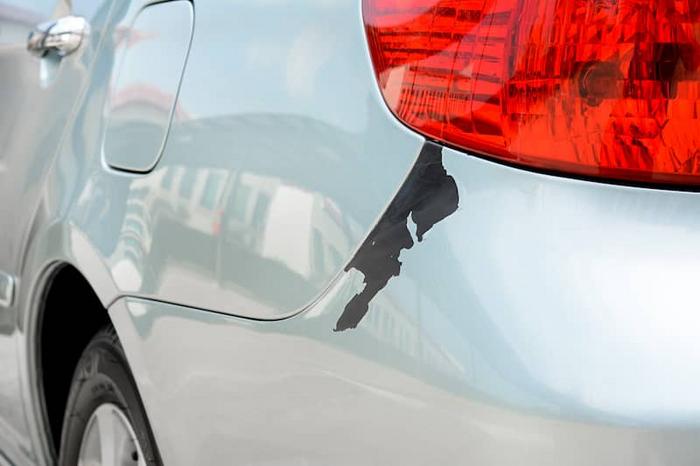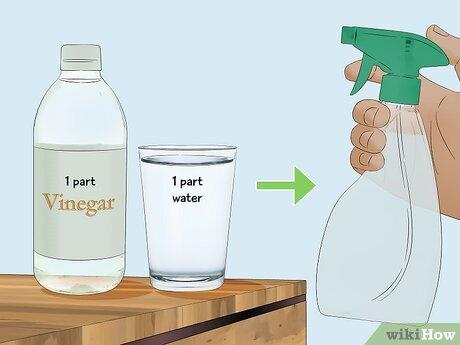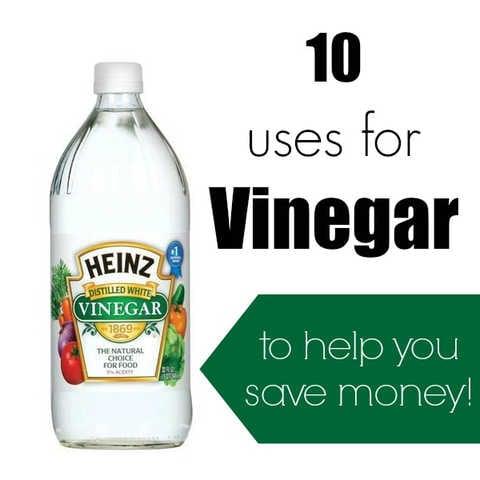As a former Jeep engineer, I’ve seen all sorts of household experiments attempted in the name of automotive care. But recently, a particular claim caught my attention: vinegar could either be a miracle cleaner or a potential paint-damaging agent for cars. Could a simple household item really hold sway over the shiny finish of your prized vehicle? It’s a question that has sent enthusiasts into a spin, just as a few of my friends learned the hard way with their high-end luxury automobiles. I’ve personally seen the mixed results when using vinegar on my own vehicles—sometimes cleaning grime superbly, other times raising eyebrows. It’s this uncertain reality that drives me to explore both the potential benefits and risks of using vinegar on car paint. With my insights and experiences, let’s dive into the core of this automotive enigma and uncover the truth.
What is Vinegar and Its Composition?

In my years working with automotive materials and finishes, understanding the intricacies of the cleaning agents we apply to car surfaces has been crucial. One seemingly ordinary substance that often finds its way into our garages is vinegar. But what exactly is vinegar, and what makes it both a friend and a potential foe to car paint?
Vinegar is a simple yet powerful solution that primarily consists of water and acetic acid, usually around 4-7% in concentration. This acetic acid is the component that gives vinegar its distinct smell and the cleaning power we often appreciate. Yet, did you know that the acetic acid in vinegar can be both a friend and foe to car paint? This dual nature emerges because acetic acid is excellent at cutting through grime and deposits, making it an effective cleaning agent. However, if not used carefully, it can also begin to degrade the clear coat that protects your car’s paint.
Having made the mistake of using a high-acid cleaner without adequately understanding its impact, I learned the hard way that research and forethought are fundamental. It cost me a paint job to correct the damage, a mistake that serves as a reminder of vinegar’s potential dual nature. Knowing how to wield this common household staple can make all the difference in maintaining your vehicle’s luster without risking unnecessary harm.
Why Use Vinegar on Car Paint?
Benefits of Using Vinegar

During my time in the field, I discovered several properties of vinegar that make it an appealing choice for automotive detailing. Could this household liquid actually enhance the shine of your car’s paint? I believe so, based on years of hands-on experience. One day, I overheard a detailer praise its ability to cut through grime efficiently. Intrigued, I experimented and found that mixing vinegar with water created an effective cleaning solution, leaving my Jeep sparkling without compromising the finish.
Vinegar car detailing might sound unconventional, but the results speak for themselves. When diluted in a 1:3 vinegar-water ratio, this humble acidic liquid becomes an exceptional cleaner. Its properties can break down mineral deposits, remove stubborn water spots, and even disperse greasy residues that ordinary solutions struggle with. However, vinegar is a powerful agent, so moderation is key to ensuring safety with car paint. From my experience, a thoughtfully prepared vinegar water solution not only removes impurities but also enhances the natural sheen of the paint.
However, it’s paramount to understand the balance required to leverage these benefits without veering into potential risks. With the right approach, vinegar becomes an invaluable tool in your detailing arsenal, but let’s delve further into safe application techniques to maximize its utility while protecting your paintwork.
Potential Risks and Damage to Car Paint

What hidden dangers could your DIY car wash pose if you’re not careful? You’re probably considering using vinegar, a common household item for its cleaning prowess. However, from my experience, while vinegar can be effective, it can also be a double-edged sword. I’ve encountered incidents where DIY enthusiasts used vinegar excessively and paid the price. There was a time when a friend attempted a quick detail with pure vinegar, resulting in noticeable dullness on the paint.
Vinegar is acetic acid and known for its ability to remove stubborn residues, but it can also strip away the protective wax layer on your car’s paint. This wax removal leaves the paint finish vulnerable to damage. If not careful, the very element you rely on for cleaning could contribute to long-term deterioration. Therefore, I urge caution and moderation. Always test in an inconspicuous area first to prevent any undesirable vinegar damage to car paint. This ensures your DIY efforts enhance rather than compromise your vehicle’s appearance. Understanding these risks underscores the importance of knowing precisely how to use vinegar effectively, which we’ll explore further in the following sections.
How to Use Vinegar Safely on Car Paint
Preparing a Vinegar Solution

What’s the secret formula to safely mixing vinegar for your car cleanup? Well, it all boils down to the right combination. Through trial and error, I discovered that a vinegar water solution with a 1:3 ratio is your best bet for car paint. This mixture effectively lifts dirt while keeping your car’s finish intact. I learned early on that the right mixture can make all the difference. After one overly strong clean that left a lingering odor inside my Jeep, I realized just how crucial this balance was. Now, every cleanup is a breeze—no lingering scent, just a pristine shine.
Understanding how to prepare a vinegar solution is fundamental when tackling the broader question of how to use vinegar safely on car paint. Too much vinegar can strip the paint, while too little may not clean effectively. By sticking to this tried-and-tested ratio, you ensure safety and effectiveness in your routine, protecting both your car’s aesthetic and your peace of mind. With the right preparation, you can enhance your car paint treatment, setting the stage for proper application techniques that I’ll delve into next. Let’s keep that car gleaming without a hitch!
Application Techniques

How can you apply vinegar to get results without risking your paint’s health? From countless experiences, I can attest that technique is everything. Applying vinegar isn’t just about grabbing a bottle and getting to work; it’s an art that, if done right, can drastically transform your car’s appearance without causing any harm. In my early days, I made the rookie mistake of using vinegar in direct sunlight, thinking I was getting ahead, but it only led to unsightly streaks. This taught me the crucial importance of working in the shade.
Beyond that, I recommend using soft, clean cloths to ensure the vinegar solution is applied evenly and gently. Vinegar, when appropriately diluted, can be a powerful tool in your car cleaning arsenal. Yet, it’s about having a sound technique. Mist your car panels lightly, and remember to wipe it off promptly to prevent residue. Sharing these best practices isn’t just about anecdotes; it’s about empowering you to use vinegar effectively with the assurance that your car paint remains pristine. These guidelines align effortlessly with preparing a vinegar solution to safely enhance your cleaning regimen.
Conclusion
In the end, is vinegar a friend or foe for car paint? Reflecting back, my experience using vinegar has taught me that it’s about respect and knowledge. In the realm of vehicle maintenance, vinegar stands as a double-edged sword—it can be both beneficial and detrimental depending on how it’s used. By understanding vinegar’s acidic composition, we can harness it for effective cleaning without risking harm to car paint.
Using vinegar wisely means embracing its cleaning capabilities while being cautious of its potential to damage when not diluted correctly. My journey has shown that preparing a balanced solution and applying it with care is crucial. As with anything in vehicle maintenance, knowing the right techniques goes a long way in ensuring your car looks its best.
Take my advice; use vinegar wisely and it will serve your car well. Always remember: less is more!